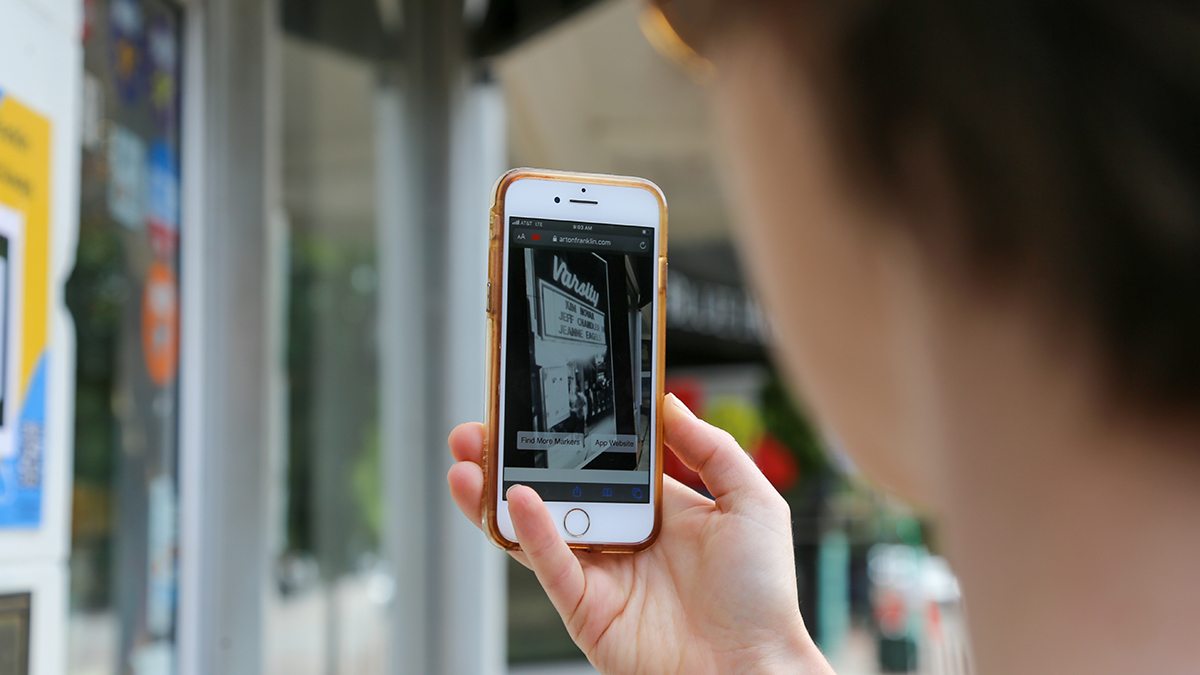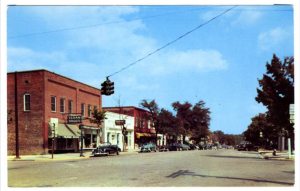A new interactive project aims to highlight Franklin Street’s history
Without Franklin Street, Carolina wouldn’t be the same. Through a new installation in downtown Chapel Hill, Tar Heels can learn more about the area’s history and see what the thoroughfare used to look like.

Without Franklin Street, the Carolina experience wouldn’t be the same. The main thoroughfare and the businesses that populate it play such a prominent role in Tar Heels’ lives
But when the pandemic forced a change in operations last March, many Franklin Street restaurants, bars and shops faced significant hurdles and have struggled to get back on track.
To drive more people to Franklin Street — especially now that the vaccine has made it easier to enjoy its restaurants, bars and shops more safely — Carolina organizations partnered with the Chapel Hill Downtown Partnership to develop a new way to enjoy and explore the storied street.
ARt Walk on Franklin: Then, Now and Always is an interactive virtual experience that invites participants to stroll Franklin Street, scan 21 one-of-a-kind logo markers, see images of what that location used to look like and learn more about the area’s history.
A collaboration between Arts Everywhere, the UNC General Alumni Association, the Chapel Hill Downtown Partnership and the student-run Carolina Augmented Reality and Virtual Reality Club, the project aims to drive business to Franklin Street while bolstering the affinity many Carolina alumni and students already have for the street — all while learning something new.
The project is part of the General Alumni Association’s recent seven-part series, which told the stories of all different types of Chapel Hill businesses.

“Looking east down Franklin Street” from Wilson Library Special Collections.
Joe Petrizzi, who recently graduated with his master’s in history studying Carolina and Chapel Hill, was instrumental to the ARt Walk on Franklin project. He worked to find historical photos and facts about the street and its former and current occupants.
He was well-suited for the work. Petrizzi has been studying UNC-Chapel Hill since his days as a history undergrad at Carolina. “I’m fascinated by the idea of a place that people have loved for 200 years,” he said. “Walking around Franklin Street, my brain puts these images up of, ‘This used to be this, and that used to be that.”
Petrizzi pulled photos from University Libraries archives, which have digitized the Daily Tar Heel and past yearbooks, as well as other resources that have documented the ways in which Franklin Street has changed over the years.
“This project ties the past and present together,” said Matt Gladdek, executive director of the Chapel Hill Downtown Partnership. “It shows the businesses that have touchstones for alumni and community members for generations and connects them to what is currently downtown. I’m excited to think of brand new local businesses like Epilogue, Brandwein’s or Que Chula that might be included in a project like this in another 20 years.”
ARt Walk on Franklin celebrates the street, but it doesn’t try to whitewash its history.
As a historian, Petrizzi wanted to make sure people had an honest depiction of downtown’s history.
“I tried to put in a little bit about where there were civil rights protests or places that were segregated,” he explained. “I don’t want to have the picture that we’re painting be, ‘This is the perfect place.’ I don’t think that’s how we should love Chapel Hill. It should be, ‘I love you for so many good reasons, but I also want you to always be getting better, and I’m going to learn a little bit about that history, so we make sure that we continue to get better.’”
The concept for ARt Walk on Franklin needed more than a historian to find and build content. It also meant developing technology to support that artistic scope.
Micah Haycraft ’21, who recently graduated with his bachelor’s in computer science and was a member of the Carolina ARVR Club, helped develop the code for the augmented reality program, which uses a web browser rather than an app.
“The tone of the whole experience is very easy,” he explained. “It’s not a big commitment. It’s similar to if you were wandering through an art gallery. There are some things that are available there for you to take what you want from them.”
Haycraft said that outside of the augmented reality experience that the poster logos offer, ARt Walk also includes location-based pins that encourage users to stroll the entirety of the street. “The idea is that if you’re at Business A, and you had your AR experience, and you follow the location-based pins, you end up scanning the information in the window of Business B, and maybe you think, ‘We should check out Business B,’” he says.
Both Haycraft and Petrizzi hope their efforts encourage more community members to get back out on Franklin Street. “The idea that the project may increase their patronage or at least their interest from folks on Franklin Street felt like a good reason to put work into it,” said Haycraft.




